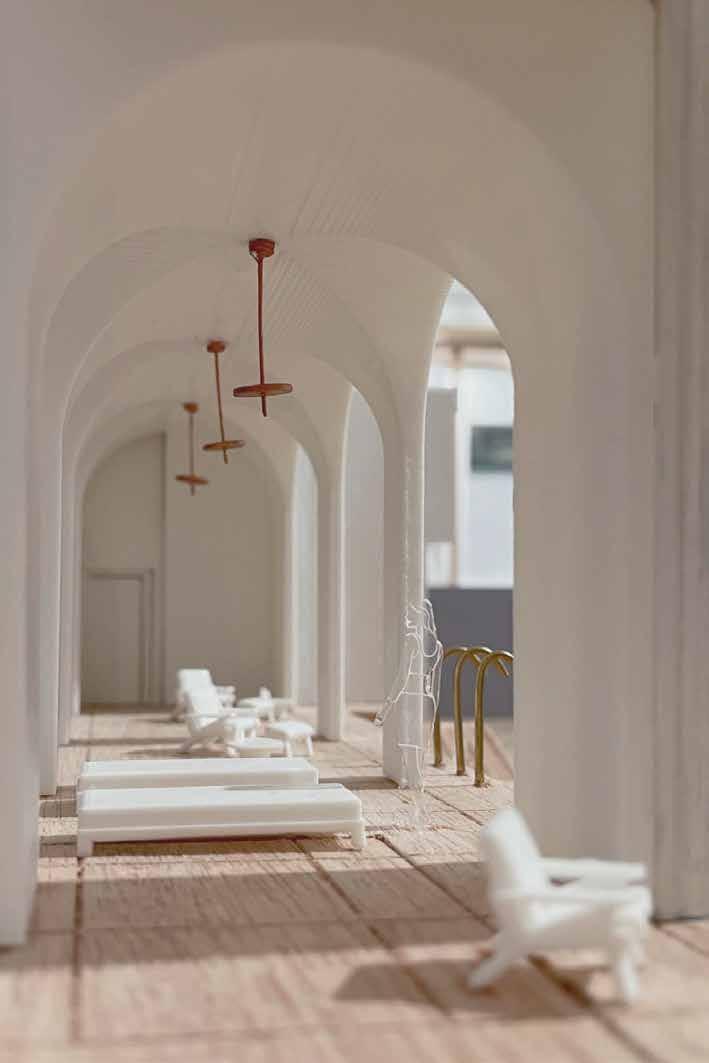

ARCHITECTURAL PORTFOLIO
BY MINA LI
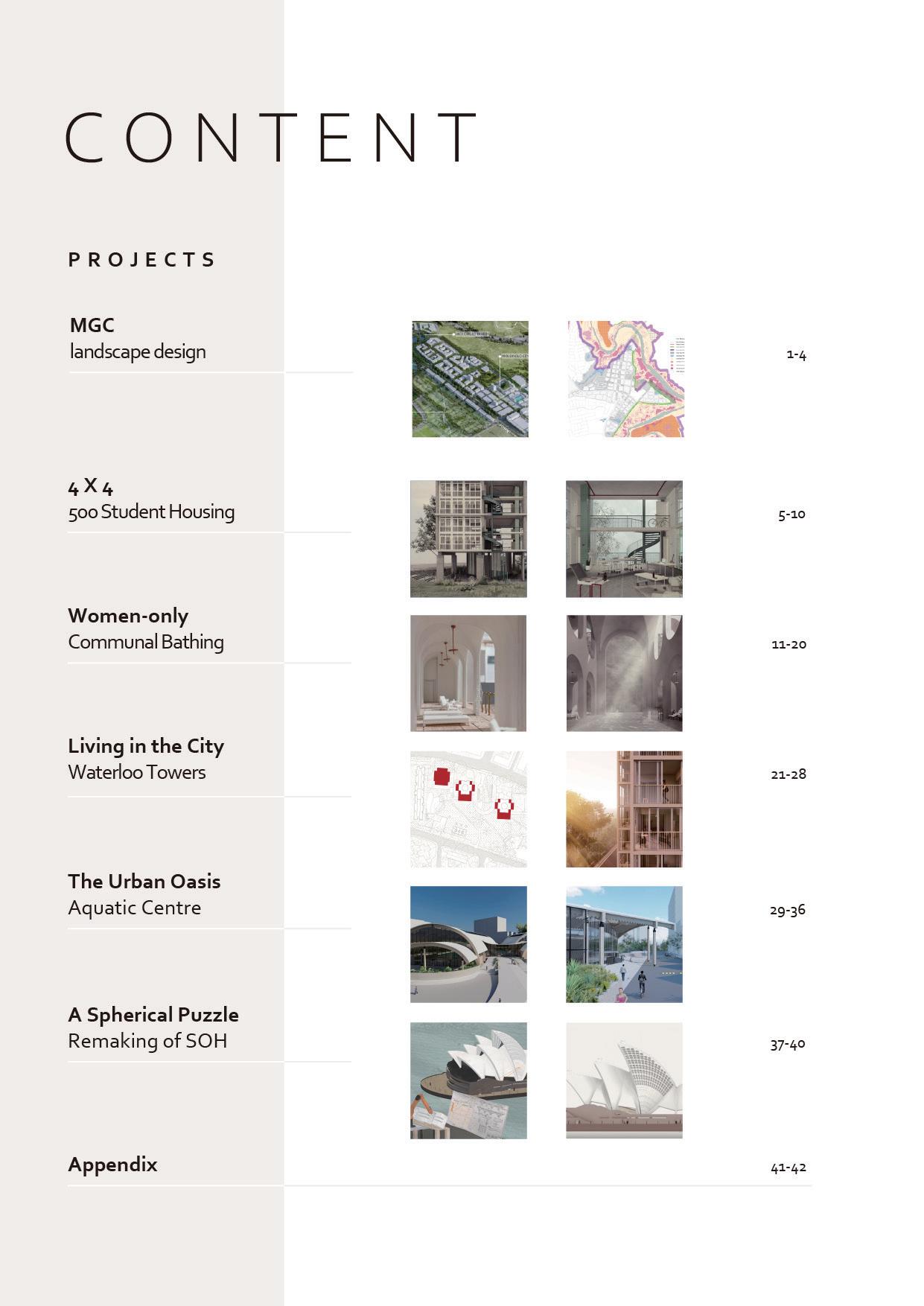
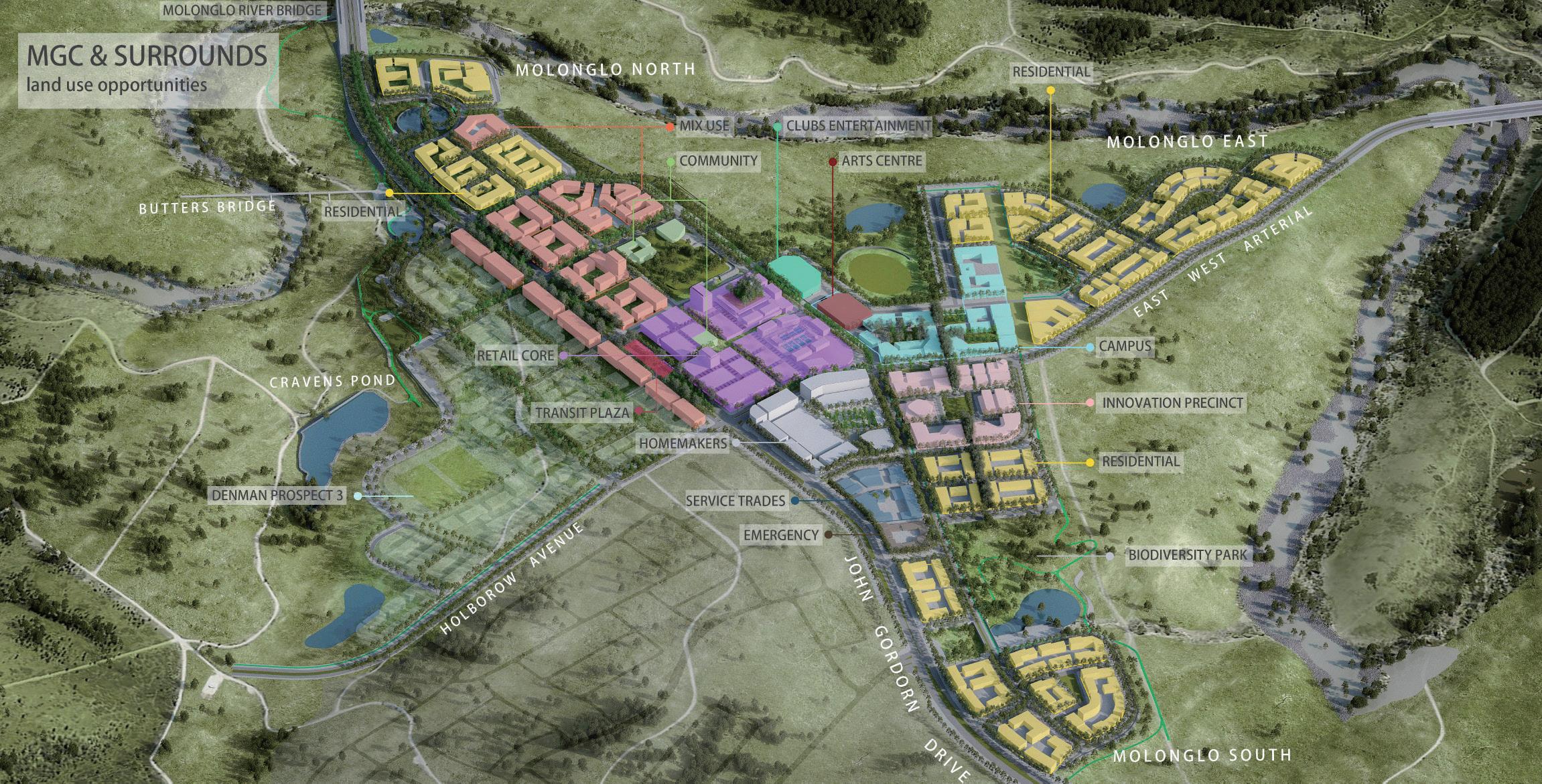

Molonglo Group Centre and Surrounds (MGC) is the primary commercial hub of the Molonglo Valley, a greenfield development planned to accommodate a future population of approximately 55,000. The Suburban Land Agency (SLA) engaged SMD to conduct an urban review of the corridor, aiming to optimise the interface between the JGD3C and its urban and environmental context. This review was informed by the Molonglo Group Centre and Surrounds – Draft Concept Plan published by EPSDD and served as the foundation for the PSP landscape design. As an assistant at SMD, I contributed to the project by supporting 3D modelling, drafting drawings, and preparing visual presentations for the MGC area.
KEY WORDS: places for people, movement, vibrant streets, green and sustainable



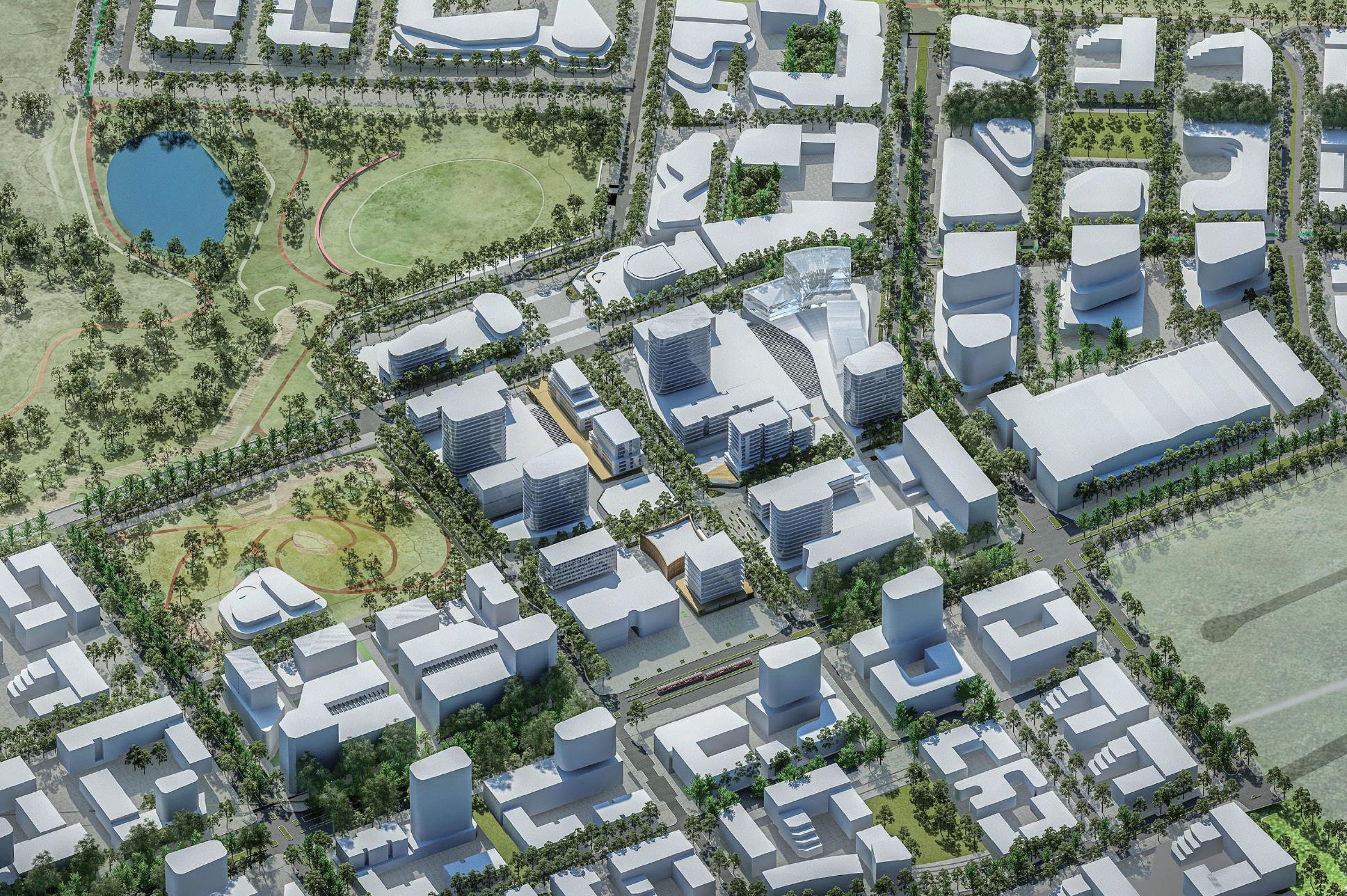




4 X 4
500 Student Housing
a student housing block that redefines modes of sharing
In 4 x 4 Student Housing, each unit is a module of 16 people, consisting of two zones: private and shared. Each student occupies a bedroom for sleeping, changing, and storing personal belongings. Every two bedrooms share a winter garden, and every four share a set of common household amenities, including a bathroom and kitchenette. Every 16 bedrooms share a double-height outdoor space in the middle, serving for larger-scale social events.
As its inhabitants explore their identity in the community between solitary and social, the building respects this openness of choices by constructing a gradience to balance between independence, intimacy, and collective. Its answer to the site and brief is affordable and durable with a minimalist aesthetic.
KEY WORDS: sharing livestyle, levels of intimacy, boundaries, collective and independence
Group Acadamic Project Mina Li, Greta He, Monica Chen 03/2022 - 06/2022 MARC5000 Induction Studio 42-50 Paramatta Road, Sydney, NSW, AU
Plan Architectural Drawing

Interior Render
Shared Living Space (16 students)
The boundaries between every two layers are ambiguous, shifting from open to closed, creating multiple spatial possibilities in different scenarios.
Imagine when two kitchens of four are opened to the central shared space, they can serve 16 people of the whole module with minimal extra devices.
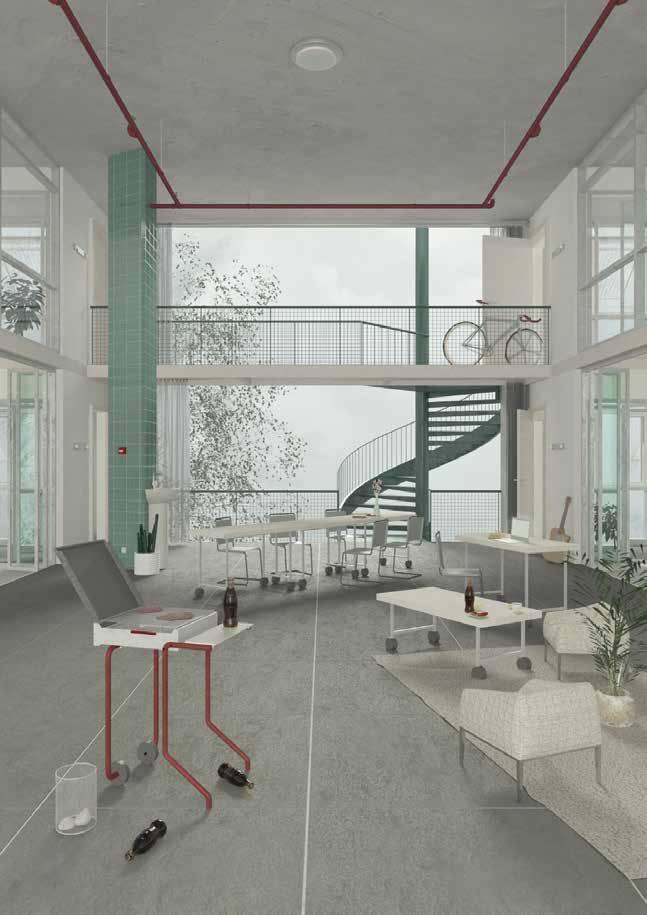
Typical Floor & Ground Floor Plan
Architectural Drawing Elevation & Section

Architectural Drawing



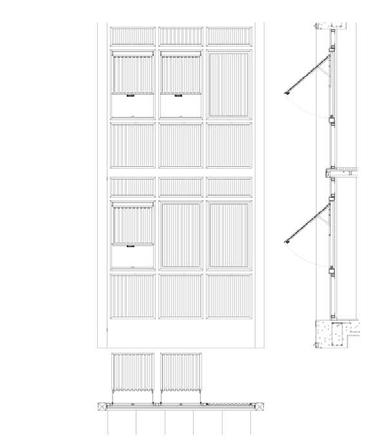


Women-only communal bathing
breaking through a new disciplinary regime of beauty
In the context of internet age, beauty discourse spreads itself through social media to every corner of our lives. Prescriptive beauty norms have become the solid base of not only fashion industry but also the inexorable law of many gender-related creations. The new disciplinary regime of beauty was erected in a more hidden and harmful way, perpetually guiding women’s ‘free choices’.
In this study, I proposed a single-sex bathhouse project for women, exploring the possibilities of liberating appearance pressure for women. This project will discuss the strength of communal bathing and how it provides opportunities for women to reassess, reconnect, and rethink their relationships with their own bodies.
KEY WORDS: prescriptive beauty norms, communal bathing, single-sex space, gazes, self-identities, third person perspective, internalised objectification
Individual Acadamic Project Mina Li 08 /2023 - 11/2023 MARC6000 Thesis Studio Taylor Square Substation No.6 and Conveniences
Concept Research & Site Investment



I focus on a site on Oxford Street where pedestrians and visitors from nearby facilities use the plaza, creating an isolated zone around a heritage property in Taylor Square.



This creates discomfort for rare visitors, prompting the author to consider the daily 'gazed upon' situation faced by women

“Up



1880s Pissoir Urinal
Architectural

The bathhouse project, centered around reuse, reveal, and reconnect, necessitates the excavation of an underground bathhouse.

The new underground platform uses a 'cut language' to map invisible boundaries and create a vapor void, interpreting relationships between gazers and gazed upon.
The staircase leads to a buffer zone floor for female patrons, ensuring privacy and encouraging them to reassess their relationships with their bodies.


This women-only bathhouse programme is proposed to draw attention to issues of prescriptive beauty norms and look for possibilities of liberating appearance pressure for women.


The power of collective exposure in women-only spaces is enormous, as it will be a chance to rethink, release, and reconnect women’s bodies.


The strength of redefining and transforming a space with the past of ignoring women’s needs into a space which is completely designed for women is a strong move to raise awareness of past and vigilance for more gender-related phenomena.




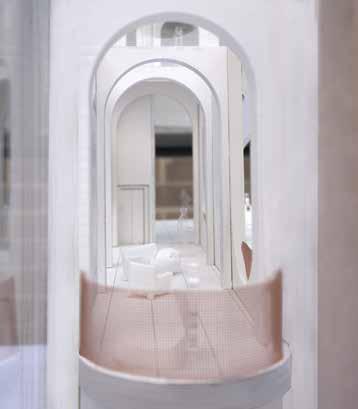
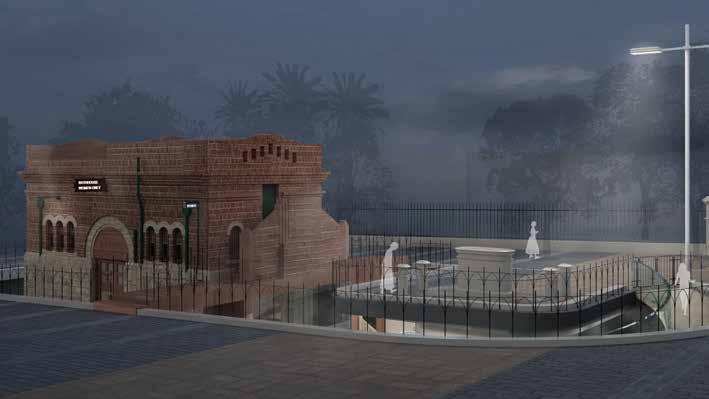
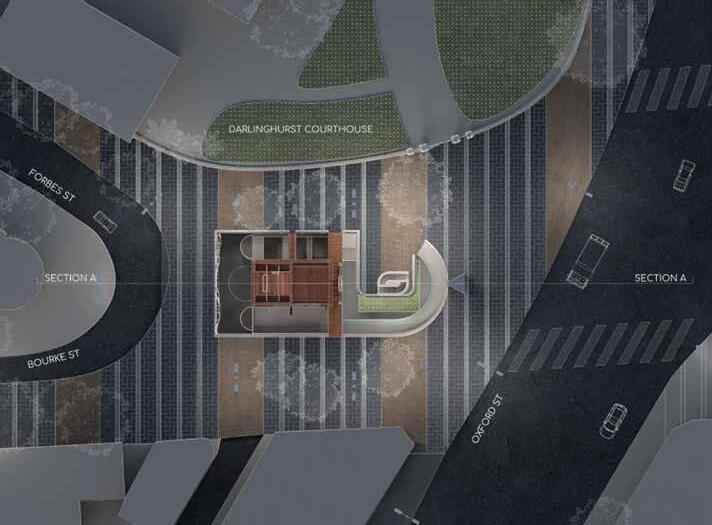


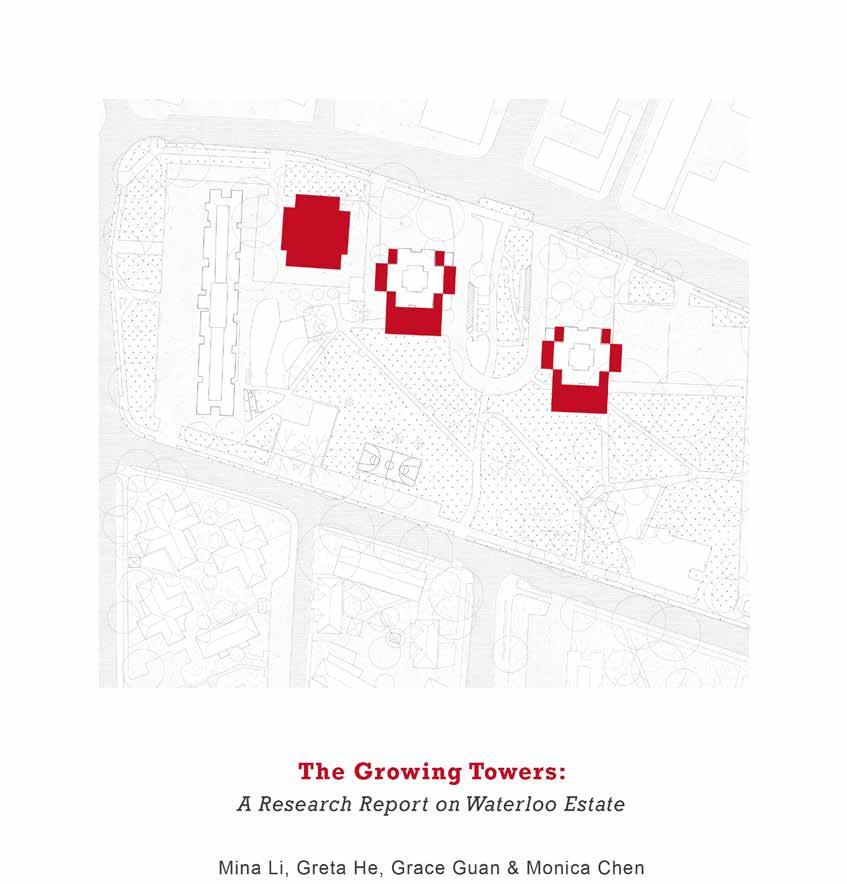
Living in the City
Rothwell Research Studio: Lacaton & Vassal Architects
The workshop builds on the Rothwell Symposium (2729.04.2021) to explore a range of questions associated with the Rothwell program led by the current co-chairs, French architects Lacaton & Vassal.
This report looks specifically into the twin towers of Waterloo, Matavai and Turanga. The research aims at improving the quality of the existing dwellings, and also radically seeking for possible solutions of densification. On Stage 1 of our research, we identify the characteristics of the current living environment for the tower inhabitants. On Stage 2, we propose two transformation schemes for the existing structures to provide better apartments. On Stage 3, learning from the values of the twin towers, we discussed the possibility of building a new structure on the site to accommodate more residents.
KEY WORDS: densification, social and affordable housing, generosity, living environment renovation, materialities
Group Acadamic Project Mina Li, Greta He, Grace Guan & Monica Chen 07/2021 - 09/2021 ARCH9040 Rothwell Research Studio Waterloo Estate, Sydney, NSW, AU
Research On The Site


Observing and interviewing tower residents, we identified high average age and low mobility as key factors for potential improvements, focusing on improving indoor environment.


The most dominant window inside an apartment, successfully introduces beautiful view and sunlight into the room.
The balconies during the 2017 #WeLiveHere Project symbolized community memory, as people lit their windows to protest against the city’s plan to demolish two towers.

Existing Value
Transformation Strategy
Improving & Increasing
Variations Of Facades Northeast Unit




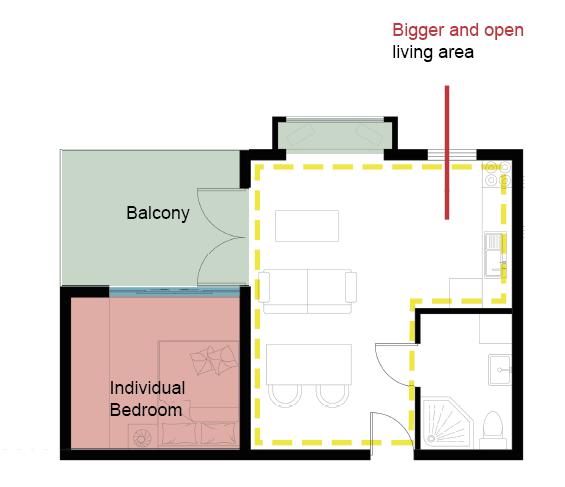

Proposal I & Proposal II
Design Details
Balcony Transformation
The original balcony, a symbol of residents’ memories, will be preserved during renovation. Units facing north, east, and west convert hard-to-use balconies into bay windows for outdoor enjoyment. North units use balconies as built-in cabinets and storage spaces, enlarging storage space.
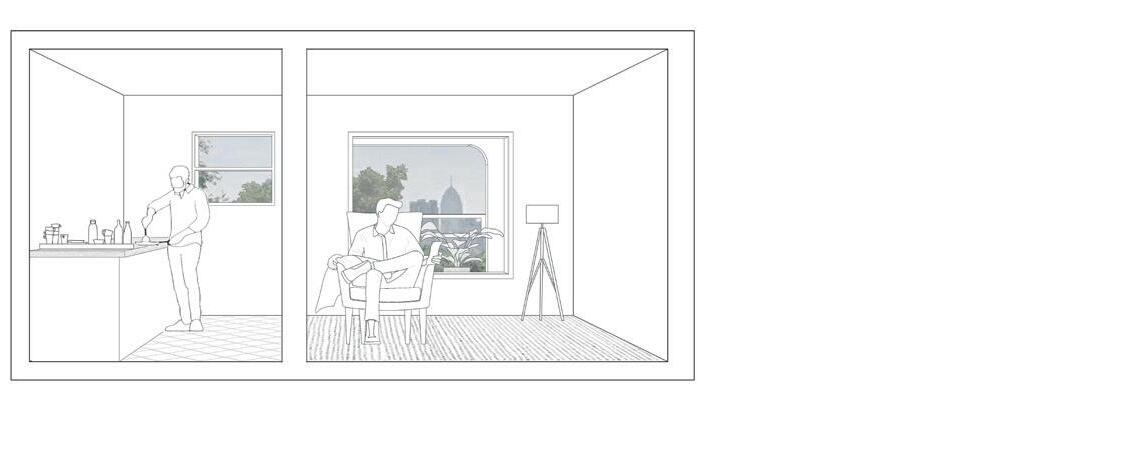



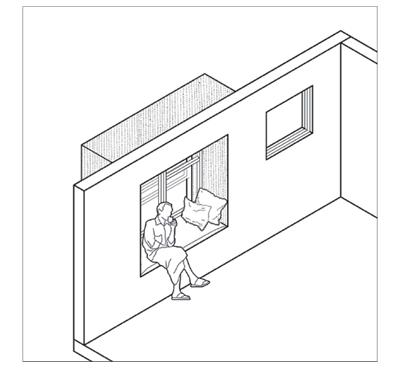
The blind walls and walls with small windows as an opportunity to add attachments and added an extra bedroom and an extra balcony for each studio. And by doing this, we protruded a new slab out of the original façade and expanded the perimeter of the building. This means we can more windows, and the more windows, the more inhabitable rooms, the more residents can live a better life of quality.
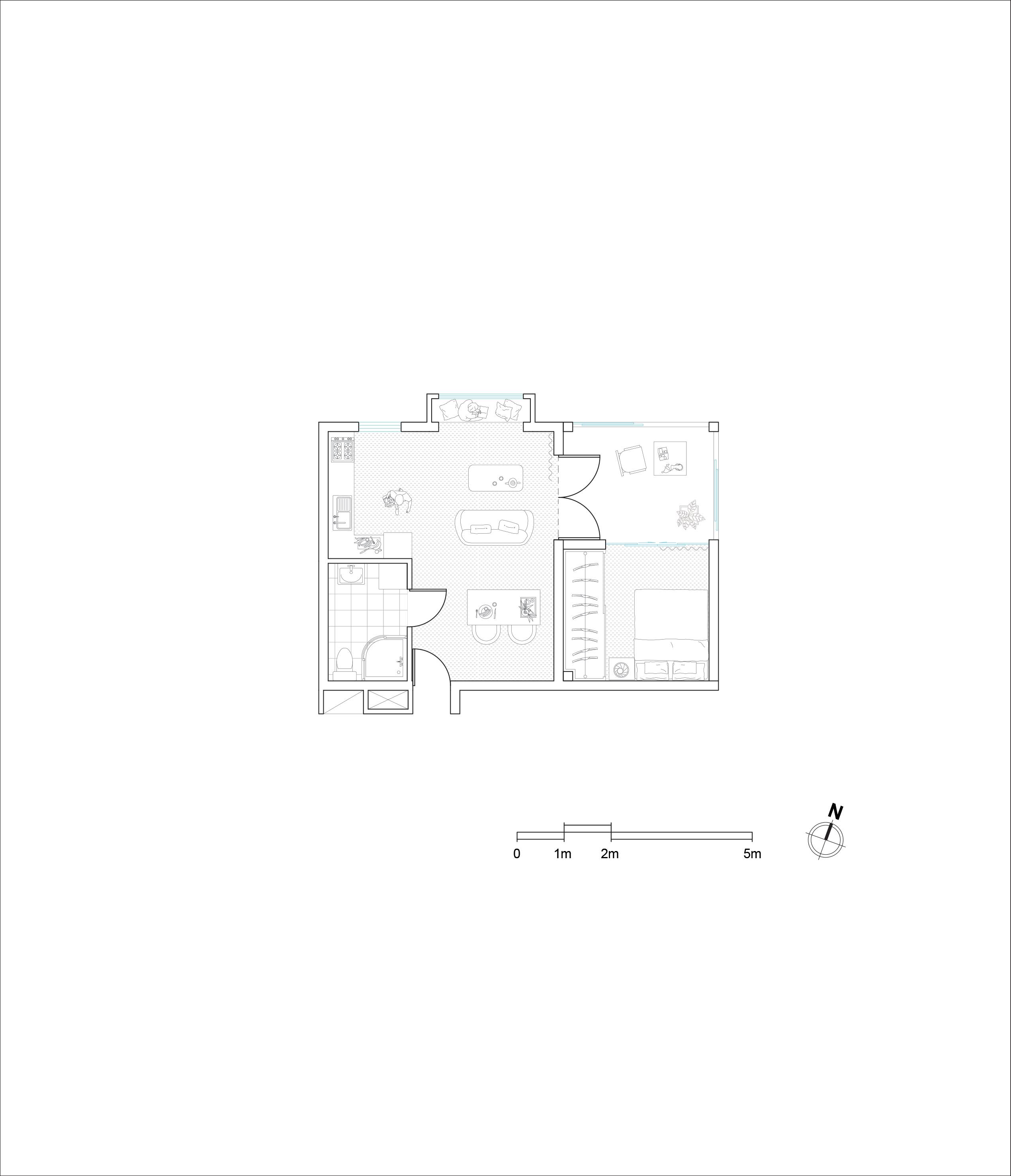
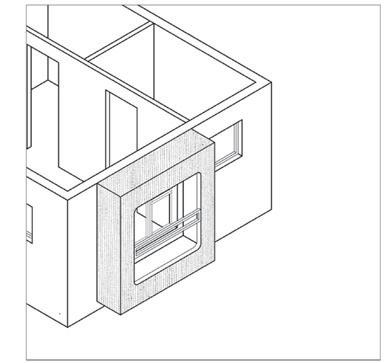

Open Up The Tower
The proposal enhances the tower’s natural light and views by transforming the existing balcony into a bay window, creating a comfortable seating area.
A new winter garden, situated next to the living and bedroom areas, provides natural light and diverse views, particularly beneficial for elderly residents who can invite friends for social interaction.

Facade Strategy
The building’s residents (especially the elderly residents) will enjoy a large polycarbonate wintergarden, shading, and an inner thermal curtain to reduce heat gain and operational energy, utilizing a cheaper and easier-toinstall material.
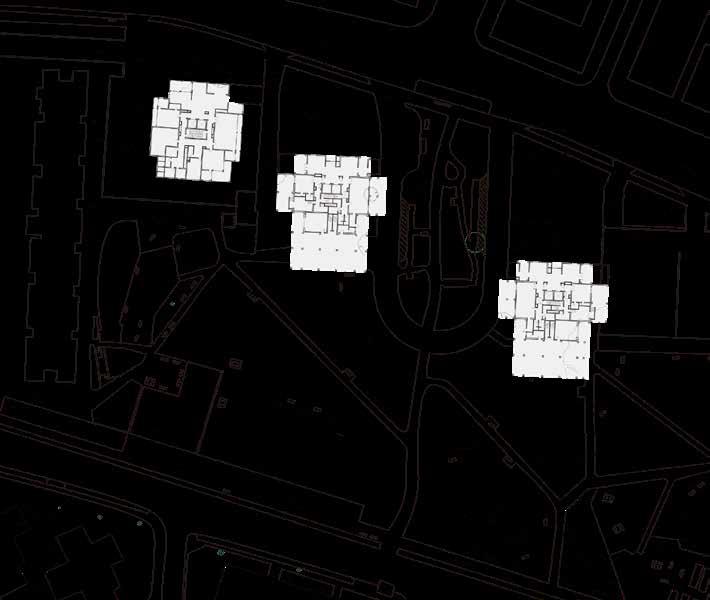






Elevation

The Urban Oasis
a mixed use aquatic park bringing restoration to dense urban
The project site is at 14-26 Wattle Street Pyrmont, an inner suburb that is undergoing considerable change as new multiunit residential projects are constructed in an area characterised by large brick warehouse buildings, terrace housing, apartment projects and the Sydney fish markets. As the population increases and the demographic composition changes, there is increasing diversity and an opportunity to explore new building typologies and mixed uses. The URBAN OASIS is such a project.
The URBAN OASIS – a place for exercise, relaxation and entertainment in a club-like atmosphere operating from 5am till Midnight - bringing the restorative qualities of water to a dense urban area with a mix of swimming, floating, eating, drinking and relaxation.
KEY WORDS: relaxation, healing, physical and mental wellbeing, diversity, mixed-use aquatic park, experience of water, connection with nature
Individual Acadamic Project Mina Li
03/2020 - 06/2020 BDES3026 Architecture Studio 3A
14-26 Wattle Street Pyrmont, Sydney, NSW, AU
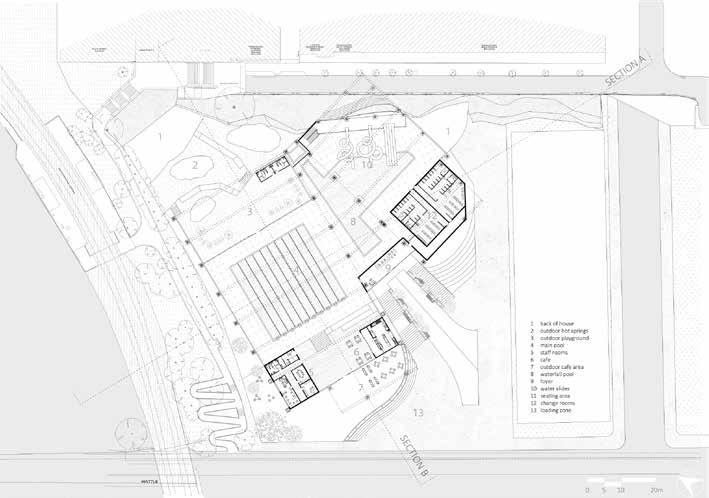
A
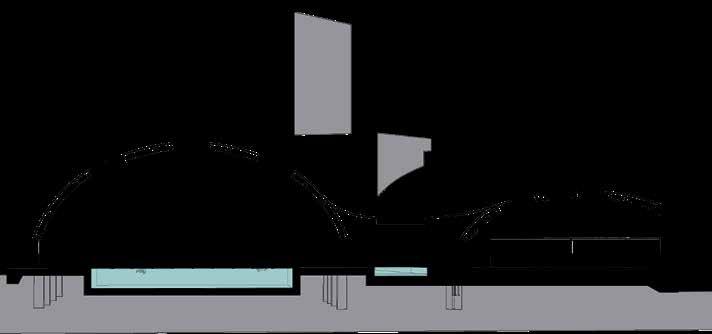

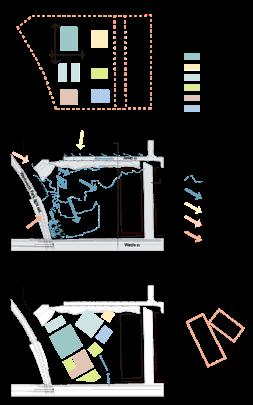
Goals Requirements
The space is intentionally designed to be a place that interacts well with surrounding and encourages people to visit.
Section B
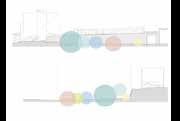


-Main pool with minimum dimension of 25m – for swimming & relaxation.
-The main column-free space must be able to accommodate a 30m hypothetical circle.
-The pool space shall take advantage of natural light and ventilation.

Section













Model Photos (1 : 200)

A Spherical Puzzle
Connecting the Segments -- The (re)making of SOH
The Sydney Opera House was designed like a intricated spherical puzzle of more than 2000 precast concrete segments, which are connected in both longitudinal and lateral directions. There are various segments, depending on its location and connection methods, revealing the unprecedented structure complexity.
This project focus on the assembly of Sydney Opera House and the possibility of introducing robotic assistance in its bolting process, due to the high risk of working in construction industry. This research and experiment successfully visualize the assembly and bolting process of the SOH, providing training material for similar projects and potentially serving as a prototype for future robots working on sloped or curved facades.
KEY WORDS: robotic arms, construction safety, digital modelling, cost-effective, future rapid construction
Group Acadamic Project Mina Li, Greta He, Monica Chen
08/2022 - 11/2022 MARC5010 Pure Imagination
Sydney Opera House, Bennelong Point, Sydney, NSW, AU
Research & Prototype


Design Experiment
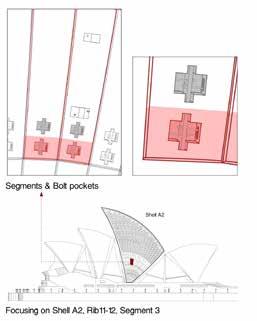
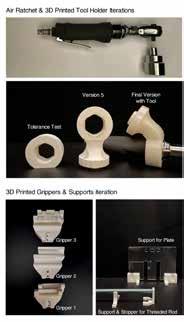





Prototype Phase I - Bolting
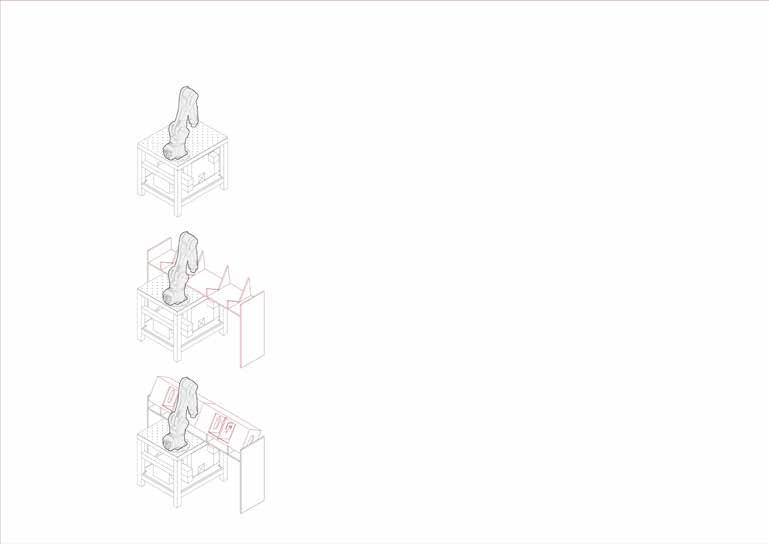

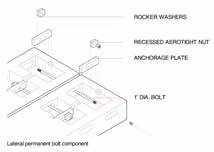



Robot Work Flow
1.Grip threaded rod
Phase II - Placing threaded rod
1.Robot Lab setting KUKAKR6-10 R1100 is fixed on table to provide stability 2. Support platform Setup supportplatform for 1:1 segment model with 60 degreeangleto stimulate actual working angle in SOH. The position isthe same withthe position in KUKAprc program
1.Grip threaded rod
The designed tool is attached to gripper which connected to the robot arm. The gripper tool is firstly opened and then closed to grip the threaded rod on designed support.
2.Place threaded rod in the model.
Move threaded rod and place it into the channel and release it. The movement follows thehighlighted curve.
3. Grip and move
Grip rod and move horizontally, continue this processtwice until itlocates at desired position
Robot Work Flow
The designed tool is at tached to gripper which connected to the robot arm. The gripper tool is firstly opened and then closed to grip the threaded rod on designed sup port.
Phase II - Placing plate
1.Grip plate
Grip plate which is placed on supported structure
2.Place threaded rod in the model.
Both the tool and the gripper are specially designed to grip the plate firmly.
Move threaded rod and place it into the channel and release it. The movement follows thehigh lighted curve.
2. Move plate
Moveplateandrotateto desired angle. The movement follows thehighlighted curve.
3. Grip and move
Grip rod and move hori zontally, continue this processtwice until itlo cates at desired position
3.Slotthe plate into model
Push the plate into the pocket. The slot has reasonable tolerance for the plate to go in.
Trials
Design
Results
Problem solving The
Outcomes & Reflections
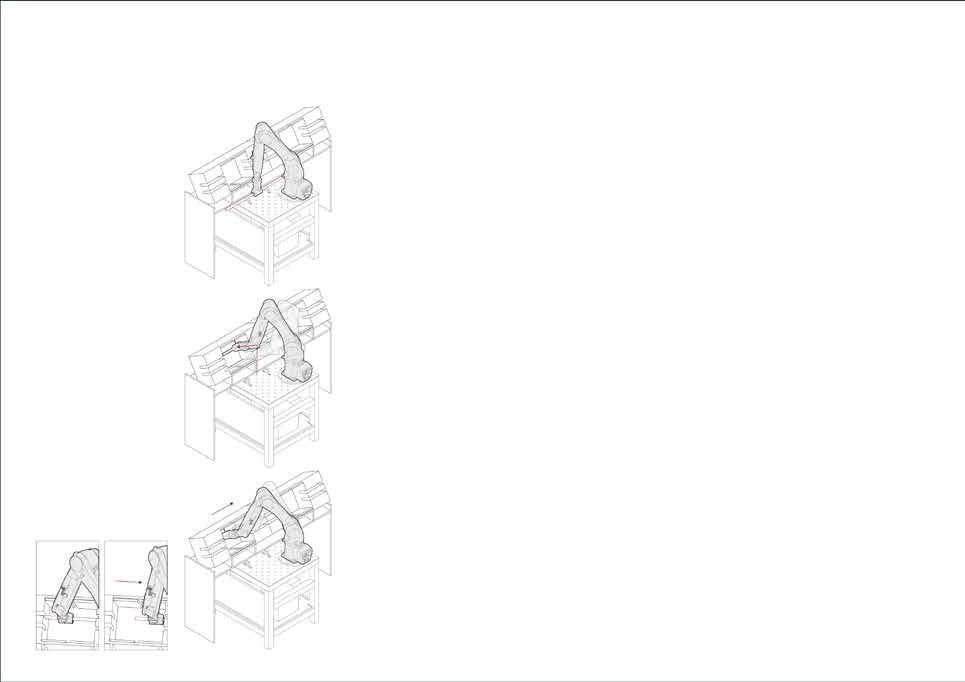












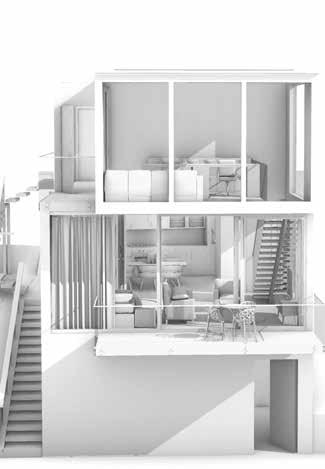



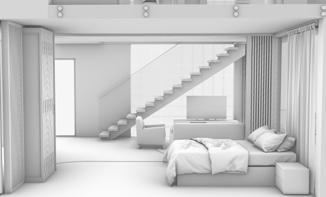
Physical Models
Digital Modelling
